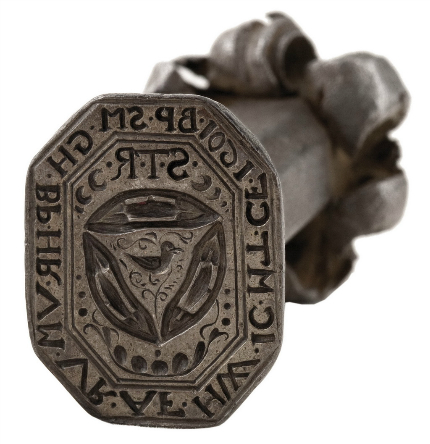Craftsmen’s work: always, from everywhere
Guild Collection
The guild relics of the János Xántus Museum in Győr have been made accessible to everyone. The offer of the collection database is simply breathtaking.
| Nemesné Matus Zsanett |
2012-09-22 19:26 |
 “...their work of craftsman was done with honour…” this is the motto that can be read on the opening page of the database of the János Xántus Museum’s website. The motto refers to a real 21th century IT development, which was created thanks to the National Cultural Fund’s grant and presents the objects of the local guilds in an easily embraceable way.
“...their work of craftsman was done with honour…” this is the motto that can be read on the opening page of the database of the János Xántus Museum’s website. The motto refers to a real 21th century IT development, which was created thanks to the National Cultural Fund’s grant and presents the objects of the local guilds in an easily embraceable way.
Győr And The Guilds
The guilds in Győr, just like in any other town, were the labour organizations of the craftsmen of the same industry. These organizations first appeared in the 14th century and though the Turkish occupation (1594-1598) stopped their development for quite a while, from the 17th century their role became stronger again. The many prospering guilds and the industries they covered were functioning due to the favourable location of the town – Vienna and Bratislava were the closest big settlements. The lives of the guilds were regulated by statutes, which were incorporated in charters and were confirmed by the lord of the land – in certain cases the king himself. These privileges give indications as to who could be member of a guild, how a master work should be completed, what obligations the guild members had, etc.
The Survivors Of An Extinct World
The basis of the guild collection contains the pieces collected by Flóris Rómer. When the liquidation of guilds and the legal introduction of industrial corporations started Rómer realized the importance of saving the relics of a „now ancient era”. In 1877 he even made an announcement and called on his fellow historians to preserve everything that is connected to the world of guilds.
Now It Is Available For Everyone
By presenting the collection of 240 pieces the museum professionals try to reach everyone who takes part in primary and secondary school education, since the material is closely connected to the history of Győr and to that of the Hungarian guilds (from the Mediaevals to the 19th century). The objects themselves can be helpful to local historians and other scholars thanks to the quality photographs and highly detailed descriptions, not to mention the bibliographies. The caretakers of the collections hope that those who visit the homepage of the museum and see one of these beautiful objects of the guild era will soon visit the museum and look for the original relic also.